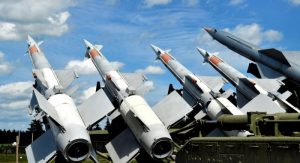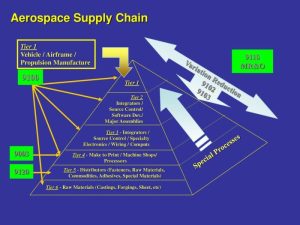
Embark on a journey through the cosmos with Defense space missions, where cutting-edge technology meets national security in the vastness of space. Get ready to explore the depths of space defense like never before!
From safeguarding satellites to countering potential threats, Defense space missions play a crucial role in protecting our interests beyond Earth’s atmosphere. Dive into the realm of space defense and discover the intricate web of strategies and technologies at play.
Introduction to Defense Space Missions
Defense space missions play a crucial role in safeguarding a nation’s security by monitoring and protecting assets in space. These missions involve the use of advanced technologies to ensure the safety and sovereignty of a country.
Significance of Defense Space Missions
Defense space missions are essential for detecting and tracking potential threats from other countries, ensuring early warning systems are in place to prevent attacks. They also help in monitoring space debris to avoid collisions with satellites and spacecraft.
Primary Objectives of Defense Space Missions
- Surveillance and reconnaissance: Gathering intelligence on adversaries’ activities and capabilities from space.
- Communication and navigation: Facilitating secure communication and navigation for military operations.
- Space situational awareness: Monitoring and tracking objects in orbit to prevent collisions and ensure satellite safety.
Technologies and Capabilities in Defense Space Missions
Defense space missions utilize a range of technologies, including:
- Satellites: Used for communication, surveillance, and reconnaissance purposes.
- Space-based sensors: Enable monitoring of Earth and space for potential threats.
- Cybersecurity systems: Protecting space assets from cyber attacks and ensuring secure communication.
Types of Defense Space Missions
Defense space missions encompass a variety of objectives and purposes. These missions are crucial for national security and defense strategies. Let’s explore the different categories of defense space missions, including reconnaissance, surveillance, communication, and navigation.
Reconnaissance
Reconnaissance missions involve gathering information about enemy activities, capabilities, and intentions. Satellites are equipped with advanced imaging technology to capture high-resolution images of specific locations on Earth. For example, the US military’s Keyhole series of reconnaissance satellites have provided valuable intelligence for military operations.
Surveillance
Surveillance missions focus on monitoring and tracking activities on Earth’s surface, oceans, and airspace. Satellites play a vital role in monitoring potential threats, such as missile launches or illegal activities. The Space Based Infrared System (SBIRS) provides early warning of missile launches and tracks ballistic missile threats.
Communication
Communication missions involve maintaining secure and reliable communication channels for military forces around the world. Military satellites enable secure data transmission, command and control functions, and real-time communication between military units. The Global Positioning System (GPS) is a prime example of a military communication satellite system used for navigation and positioning.
Navigation
Navigation missions focus on providing accurate positioning, navigation, and timing services for military operations. GPS satellites provide precise location data for military vehicles, aircraft, and personnel, enabling them to navigate effectively in various environments. These satellites play a critical role in guiding missiles and unmanned aerial vehicles (UAVs) to their intended targets.
Manned vs. Unmanned Missions
Manned defense space missions involve sending astronauts into space to perform specific tasks or experiments. One example is the Space Shuttle program, which transported astronauts to and from space stations. On the other hand, unmanned missions use robotic spacecraft or satellites to carry out scientific research, reconnaissance, or surveillance missions without human presence. Unmanned missions are often more cost-effective and can withstand harsher conditions in space.
Challenges in Defense Space Missions
Defense space missions come with a unique set of challenges that need to be carefully addressed to ensure success and safety. Let’s delve into some of the key challenges faced in executing defense space missions and how they are mitigated.
Risks Associated with Defense Space Missions
Defense space missions are inherently risky due to the extreme environment of space and the complex nature of the tasks involved. Some of the risks associated with defense space missions include:
- The threat of collisions: With the increasing amount of space debris orbiting Earth, the risk of collisions with satellites or spacecraft is a major concern. This can potentially damage or destroy valuable assets in space.
- Exposure to radiation: Space is filled with harmful radiation that can pose health risks to astronauts and damage sensitive equipment. Shielding against radiation is crucial to protect both humans and technology.
- Communication challenges: Maintaining communication with spacecraft in deep space or in hostile environments can be difficult. Loss of communication can lead to mission failure or delays.
It is essential to have robust risk mitigation strategies in place to minimize the impact of these risks on defense space missions.
Impact of Space Debris on Defense Space Missions
Space debris, which consists of defunct satellites, spent rocket stages, and other fragments, poses a significant threat to defense space missions. The impact of space debris on defense space missions includes:
- Risk of collisions: Space debris traveling at high speeds can collide with operational satellites, causing damage or destruction. This can disrupt critical defense communication and surveillance capabilities.
- Increased costs: Mitigating the risks of space debris requires additional resources and planning, leading to increased mission costs.
- Limited maneuverability: The presence of space debris limits the maneuverability of spacecraft, making it challenging to navigate through crowded orbital paths.
Future Trends in Defense Space Missions
In the rapidly evolving landscape of defense space missions, several future trends are expected to shape the way these missions are conducted. Advancements in technology, the integration of artificial intelligence, and potential collaborations are key areas to watch out for.
Advancements in Technology
As technology continues to advance at a rapid pace, defense space missions are likely to benefit from cutting-edge innovations. These advancements may include the development of more powerful propulsion systems, improved communication networks, and enhanced satellite capabilities.
Role of Artificial Intelligence
Artificial intelligence is set to play a crucial role in enhancing defense space missions. AI can be utilized for autonomous decision-making, data analysis, and predictive modeling, leading to more efficient and effective mission operations. By leveraging AI, defense agencies can streamline processes and optimize resource allocation.
Potential Collaborations and Partnerships
Collaborations and partnerships in the field of defense space missions are essential for fostering innovation and sharing resources. Public-private partnerships, international collaborations, and joint ventures between government agencies and commercial entities can lead to the development of groundbreaking technologies and solutions for defense space missions.
Weight Management Clinic Business Services
A weight management clinic is a specialized facility that offers services to help individuals achieve and maintain a healthy weight. These clinics provide personalized plans and support to address each client’s unique needs and goals.
Importance of Personalized Weight Management Plans
Personalized weight management plans are crucial for clients as they take into account individual factors such as medical history, lifestyle, preferences, and goals. This tailored approach increases the effectiveness of the program and helps clients achieve sustainable results.
Role of Nutritionists, Fitness Trainers, and Therapists
1. Nutritionists: Nutritionists play a key role in weight management clinics by creating customized meal plans and providing guidance on healthy eating habits. They educate clients on proper nutrition and help them make informed food choices.
2. Fitness Trainers: Fitness trainers design exercise programs tailored to each client’s fitness level, goals, and preferences. They provide motivation, support, and guidance to help clients stay active and achieve their weight loss goals.
3. Therapists: Therapists offer emotional support and guidance to clients dealing with underlying issues that may be affecting their weight. They help clients develop coping strategies, improve self-esteem, and address emotional eating habits.
Marketing Strategies for a Weight Management Clinic

In today’s competitive healthcare landscape, effective marketing strategies are essential for attracting clients to a weight management clinic. Building a strong online presence and forming strategic partnerships can significantly impact the success of a weight management clinic.
Building a Strong Online Presence
Creating a professional website that provides information about the clinic’s services, team, and success stories is crucial. Utilizing search engine optimization () techniques can help improve the clinic’s visibility online, making it easier for potential clients to find the clinic when searching for weight management solutions. Engaging on social media platforms and sharing valuable content related to weight management can also help in reaching a wider audience and building brand awareness.
Partnerships with Gyms, Wellness Centers, and Healthcare Providers
Collaborating with gyms, wellness centers, and healthcare providers can be a great way to promote a weight management clinic. Offering referral programs or joint marketing initiatives can attract clients who are already interested in health and wellness. By partnering with establishments that share a similar target market, the weight management clinic can expand its reach and credibility in the community.
Conclusive Thoughts

As we conclude this cosmic adventure through Defense space missions, we’ve delved into the vital aspects of national security in space. From the challenges faced to the future trends that await, the cosmos is indeed a frontier worth protecting. Until next time, keep your eyes on the stars and the mission alive!
FAQ Guide
What are the primary objectives of defense space missions?
The primary objectives include safeguarding satellites, monitoring potential threats, and ensuring national security interests beyond Earth.
How are risks associated with defense space missions mitigated?
Risks are mitigated through advanced technologies, strategic planning, and international collaborations to enhance space defense capabilities.
What role does artificial intelligence play in enhancing defense space missions?
Artificial intelligence aids in data analysis, threat detection, and mission planning, optimizing the effectiveness and efficiency of defense space operations.




